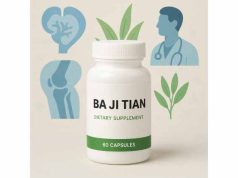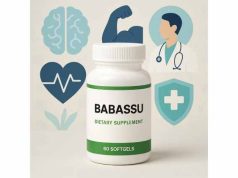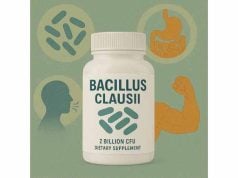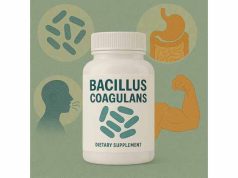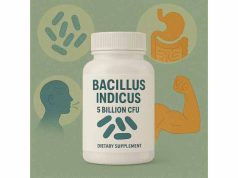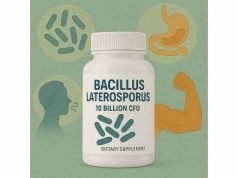
Beth root, also known as birthroot or Trillium erectum, is a traditional herbal remedy rooted in North American Indigenous and folk medicine. Prized for its unique properties, beth root has been used to support women’s reproductive health, manage heavy menstrual bleeding, and promote healing after childbirth. With a long history as a uterine tonic and astringent (meaning it can help tighten tissues and reduce secretions), this wild woodland plant is now attracting renewed interest as more people seek natural alternatives for menstrual and menopausal concerns. Understanding the science, historical context, safety, and effective ways to use beth root is essential for anyone curious about this time-honored botanical.
Key Takeaways
- Traditional Women’s Health Support: Beth root is historically used to manage heavy menstrual flow, postpartum healing, and menopausal symptoms.
- Natural Astringent: Contains compounds that help tighten and tone tissues, making it popular for wounds and excessive bleeding.
- Limited Modern Research: While widely used in folk medicine, scientific studies on its effectiveness are limited.
- Potential Risks: Not recommended during pregnancy, and improper use can lead to side effects; always consult a healthcare provider.
- Variety of Forms: Available as dried root, powder, tincture, or capsules for various health purposes.
Table of Contents
- Beth Root Overview: History and Traditional Uses
- How Beth Root Works: Active Compounds and Biological Mechanisms
- Evidence-Based Benefits and Modern Applications of Beth Root
- Safety Profile, Possible Side Effects, and Drug Interactions of Beth Root
- Optimal Dosage Guidelines and Usage Instructions for Beth Root
- Frequently Asked Questions About Beth Root
Beth Root Overview: History and Traditional Uses
Beth root, botanically known as Trillium erectum, is a woodland perennial native to eastern North America. This striking plant, easily recognized by its three-petaled flowers—usually deep red, but sometimes white or purple—is a springtime staple in shaded forests. The root (or rhizome) is the prized part of the plant, harvested and dried for herbal use.
Historical and Cultural Context
For centuries, Native American peoples—including the Cherokee, Iroquois, and Ojibwa—relied on beth root as a versatile herbal remedy. Its most notable application was in women’s health:
- Menstrual Support: Used to manage heavy menstrual bleeding (menorrhagia) and irregular periods.
- Childbirth Aid: Administered after childbirth to help stop excessive bleeding, tone the uterus, and speed recovery.
- Miscarriage Prevention: In some traditions, given during early pregnancy (though this is now discouraged due to potential risks).
- Menopausal Relief: Used as a general tonic for hot flashes and irregular bleeding during menopause.
The root was also a go-to astringent for wounds, ulcers, nosebleeds, and diarrhea. Its drying and tissue-tightening properties made it useful both internally and as a topical wash for cuts, bites, and skin irritations.
Beth Root in Folk and Eclectic Medicine
European settlers adopted beth root into their own medical traditions, and it became a staple of 19th-century Eclectic medicine—a movement focused on herbal and botanical treatments. Eclectic physicians prescribed beth root for uterine hemorrhage, leucorrhea (vaginal discharge), and various types of bleeding.
Beth root was often included in “female restoration” formulas and was sometimes called “birthroot” due to its role in postpartum care. Midwives and healers prized it for its ability to manage bleeding and help restore normal reproductive function after childbirth.
Key Traditional Uses at a Glance
- Reducing heavy or irregular menstrual flow
- Minimizing postpartum bleeding
- Promoting uterine recovery after labor
- Treating diarrhea and digestive issues
- Astringent wash for wounds, skin irritations, and oral ulcers
- Support for menopausal symptoms
Harvesting and Sustainability
Beth root is wild-harvested in the spring or fall, after the plant has stored up energy in its rhizome. Due to overharvesting and habitat loss, wild populations are now vulnerable in some regions. Many herbalists urge sustainable harvesting or the use of cultivated sources to protect wild trillium.
Modern Forms and Access
Today, beth root is available as dried root, powders, capsules, tinctures (liquid extracts), and in combination formulas marketed for women’s wellness. However, authentic products may be rare and sometimes substituted with related Trillium species or other astringent herbs.
Summary
Beth root’s reputation as a women’s herb is deeply rooted in Indigenous and folk medicine. Its range of uses for reproductive health, wound care, and digestive issues made it a staple in traditional healing, though modern research has yet to catch up with its rich legacy.
How Beth Root Works: Active Compounds and Biological Mechanisms
To appreciate beth root’s actions in the body, it’s essential to explore its active compounds and how they interact with human physiology. Like many medicinal herbs, beth root’s effectiveness comes from a blend of plant chemicals—primarily saponins, tannins, glycosides, and volatile oils—each contributing unique effects.
Astringency and Tissue-Tightening
Beth root is classified as a strong astringent. Astringents are substances that cause contraction or tightening of body tissues, particularly mucous membranes. This astringent action is due largely to its high tannin content. Tannins bind to proteins in cells, causing them to contract and form a barrier, which can:
- Reduce bleeding by shrinking blood vessels and tissues (vasoconstriction)
- Decrease excess secretions, helping with diarrhea or vaginal discharge
- Promote healing of minor wounds, cuts, or ulcers
Saponins and Uterine Effects
Saponins are plant chemicals with soap-like properties that can stimulate certain body tissues. In beth root, saponins are believed to:
- Encourage uterine contractions, which may help expel retained tissue after childbirth and speed uterine involution (return to normal size)
- Promote the flow of menstrual blood, making it useful in regulating delayed or scanty periods
- Serve as anti-inflammatory agents, easing discomfort related to menstrual cramps or postpartum pain
However, these uterine-stimulating effects are a double-edged sword: while helpful postpartum, they make beth root inappropriate for use during pregnancy, as it could provoke miscarriage.
Other Bioactive Compounds
Beth root also contains:
- Glycosides: Which may have mild heart-tonic effects and contribute to the herb’s astringency.
- Volatile oils: Responsible for its faint, earthy aroma and possible antimicrobial properties.
- Resins and starches: Contribute to its demulcent (soothing) action on irritated tissues.
Antimicrobial and Anti-Inflammatory Potential
Folk healers valued beth root as a topical wash for infected wounds, sore throats, and inflamed gums. The combined antimicrobial and astringent actions help create an environment less favorable to bacteria while soothing inflamed tissues.
Absorption and Metabolism
When used as a tea, tincture, or capsule, the active compounds in beth root are absorbed through the digestive tract. As with most plant-based remedies, the exact strength and action depend on the quality and preparation of the product.
Synergistic Uses
In traditional medicine, beth root was often combined with other herbs like raspberry leaf, black cohosh, or shepherd’s purse to enhance effects on the female reproductive system. This synergistic approach aimed to address multiple symptoms—bleeding, cramps, and hormonal imbalance—at once.
Limitations of Modern Research
While animal and laboratory studies hint at anti-inflammatory, antimicrobial, and uterine effects, large-scale human trials are lacking. Much of our knowledge is based on traditional usage and small case reports.
Summary
Beth root’s primary mechanisms—tissue tightening, bleeding reduction, and gentle stimulation of the uterus—are supported by its unique blend of saponins, tannins, and glycosides. These actions explain its traditional use for menstrual, postpartum, and wound-healing needs.
Evidence-Based Benefits and Modern Applications of Beth Root
Beth root’s enduring reputation in herbal medicine is largely rooted in centuries of tradition. Today, renewed interest in natural and holistic women’s health has led many to revisit beth root for its broad range of applications. While scientific studies are limited, both historical and modern herbalists continue to highlight beth root’s most valued benefits.
1. Support for Heavy Menstrual Bleeding and Irregular Cycles
The astringent action of beth root makes it one of the classic botanicals for managing heavy or irregular menstrual periods. Herbal practitioners often recommend it for:
- Reducing heavy menstrual flow (menorrhagia)
- Easing irregular or unpredictable periods, especially during perimenopause
- Calming cramps when excessive bleeding is accompanied by uterine pain
Beth root’s vasoconstrictive and uterine-toning properties help control excessive bleeding by tightening blood vessels and supporting muscle tone in the uterus.
2. Postpartum Recovery and Bleeding Control
Traditionally, beth root was administered after childbirth to support the uterus as it returns to its normal size and function (uterine involution). Its use is associated with:
- Reducing postpartum bleeding (lochia)
- Speeding uterine recovery
- Supporting general healing after labor
In an era before pharmaceutical drugs, such natural remedies were vital for women recovering from childbirth—especially in rural or Indigenous communities.
3. Menopausal Symptom Relief
As women approach menopause, irregular bleeding and hot flashes can become problematic. Beth root, often in combination with other herbs, is still used by some to:
- Reduce midlife bleeding irregularities
- Soothe hot flashes and night sweats (when blended with other botanicals)
- Provide gentle support for mood swings and anxiety
While evidence is mostly anecdotal, many women report feeling more balanced and comfortable during this transitional time when using beth root-based blends.
4. Digestive and Gastrointestinal Support
Beyond women’s health, beth root’s astringency makes it helpful for acute diarrhea, loose stools, or mild gastrointestinal irritation. It works by tightening tissues and reducing excess fluid loss. In historical contexts, it was sometimes used for dysentery and chronic diarrhea, especially in children (under supervision).
5. Wound Healing and Oral Care
Applied externally as a poultice or wash, beth root can help:
- Clean and dry minor wounds, cuts, and ulcers
- Soothe mouth sores, bleeding gums, or sore throats (as a gargle)
- Promote tissue repair and reduce risk of infection
Its combined astringent and mild antimicrobial effects are especially valuable in rural or traditional settings without access to modern medicine.
6. Other Folk Uses
Though less common today, beth root has also been used for:
- Nosebleeds and internal hemorrhage (as a snuff or tea)
- Leucorrhea (vaginal discharge)
- Support for chronic pelvic pain and other gynecological issues
Modern Forms and Evidence
Most modern applications rely on tinctures, teas, or capsules standardized to provide a consistent dose. While clinical trials are few, the herb remains a respected choice among holistic practitioners—especially for clients seeking gentle, non-pharmaceutical alternatives.
Summary
Beth root remains a versatile herbal ally for women’s health, wound care, and digestive balance. Its astringent, uterine-toning, and tissue-healing properties are prized in folk and modern herbalism, even as scientific validation continues to grow.
Safety Profile, Possible Side Effects, and Drug Interactions of Beth Root
When considering beth root as a supplement, safety is paramount—especially because the herb’s traditional uses focus on sensitive areas such as women’s reproductive health and wound care. Like many potent botanicals, beth root can offer real benefits, but also brings risks if not used with knowledge and care. Understanding potential side effects, contraindications, and drug interactions is essential for responsible, informed use.
Potential Side Effects and Adverse Reactions
Beth root is generally considered safe for short-term use in healthy adults when used at typical herbal doses. However, improper use, high dosages, or use in vulnerable populations can lead to complications:
- Digestive Distress: Some users experience stomach upset, nausea, or diarrhea—especially if the dose is too high or if consumed on an empty stomach.
- Mouth and Throat Irritation: Due to its astringency, undiluted beth root tinctures or teas may cause dryness, soreness, or a burning sensation in the mouth or throat.
- Skin Reactions: Rarely, topical application may result in redness, itching, or allergic-type skin reactions.
- Dizziness or Lightheadedness: Because of its mild effects on blood vessels and uterine tissue, beth root may cause dizziness or a drop in blood pressure in sensitive individuals.
Precautions for Special Populations
- Pregnancy: Beth root is not recommended during pregnancy. Its potential to stimulate uterine contractions can increase the risk of miscarriage or preterm labor. While some traditions have used small doses early in pregnancy, modern herbalists strongly advise against this practice.
- Breastfeeding: There is insufficient data regarding beth root’s safety during lactation, so it is best avoided unless supervised by a qualified herbal practitioner.
- Children: Only use under the guidance of a knowledgeable health provider, especially for gastrointestinal complaints or wound care.
Contraindications and Health Considerations
- Allergy to Trillium Species: Individuals allergic to plants in the Trilliaceae family or with known sensitivities to wildflowers should avoid beth root.
- Active Bleeding Disorders: While astringent herbs can help slow bleeding, those with underlying blood clotting disorders or on blood thinners should consult a healthcare provider before using beth root.
- Chronic Health Conditions: Anyone with liver or kidney disease, autoimmune conditions, or hormone-sensitive health concerns should speak to a professional before starting any new supplement.
Drug and Supplement Interactions
Although no major drug interactions are documented, caution is warranted when using beth root with:
- Anticoagulants and Antiplatelet Drugs: Beth root’s astringent properties may theoretically increase risk of clotting, potentially interfering with blood-thinning medications.
- Hormone or Fertility Treatments: As a herb traditionally used to affect the uterus and reproductive hormones, beth root may interact with medications or supplements targeting female hormone balance.
- Other Astringent or Uterine-Stimulating Herbs: Combining beth root with herbs like shepherd’s purse, yarrow, or black cohosh may intensify effects—sometimes beneficially, sometimes excessively.
Risk of Overharvesting and Adulteration
Due to declining wild populations, authentic beth root can be hard to source, leading some suppliers to substitute related species or unrelated astringent herbs. This can create inconsistency in potency and safety. Choose trusted, ethical sources and avoid wild harvesting unless you’re trained and confident in plant identification.
Symptoms to Watch For
Anyone using beth root should stop and seek medical advice if they notice:
- Persistent nausea, vomiting, or stomach pain
- Heavy or prolonged vaginal bleeding
- Signs of allergic reaction (rash, itching, difficulty breathing)
- Severe dizziness or fainting
Summary
Beth root is best used thoughtfully and with respect for its potency. When approached responsibly, side effects are generally mild and rare. However, because it affects reproductive tissues and bleeding, professional guidance is essential—especially for those with underlying health issues, pregnant women, or anyone on prescription medications.
Optimal Dosage Guidelines and Usage Instructions for Beth Root
Like many traditional botanicals, there is no universal, clinically validated dosage for beth root. Instead, recommended amounts are drawn from historical practice, modern herbalist consensus, and limited observational studies. To ensure safety and efficacy, it’s important to match dosage and preparation to your intended use, and to consider your own health status.
Common Dosage Forms
Beth root is typically available as:
- Dried Root: Used to make teas, decoctions, or powders.
- Tincture: Alcohol-based extract that delivers a standardized dose.
- Capsules/Tablets: Provide a convenient, measured dose (though less common due to sustainability concerns).
- Topical Washes: Decoctions or diluted tinctures for skin, oral, or wound care.
General Dosage Guidelines
Always consult with an experienced herbalist or healthcare provider for personalized advice, especially for chronic or complex health issues.
- Tea/Decoction: 1–2 grams (about 1 teaspoon) of dried, chopped root simmered in 1 cup of water for 10–15 minutes. Drink up to twice daily for menstrual or digestive concerns.
- Tincture: 1–2 mL (about 20–40 drops), up to 3 times daily. Dosage may vary by tincture strength (usually 1:5 or 1:4 extraction ratios in 40% alcohol).
- Capsules: 300–500 mg, 1–2 times daily. (Check that the product contains authentic Trillium erectum.)
- Topical: Prepare a weak tea or dilute tincture and apply as a compress or rinse to affected skin, wounds, or mucous membranes.
Usage Tips and Best Practices
- Start Low: Begin with the lowest effective dose and monitor your body’s response, especially if you are new to astringent herbs.
- Cycle Use: Avoid using beth root continuously for long periods. Herbalists recommend cycles of 2–3 weeks with breaks, especially for menstrual regulation.
- Monitor Symptoms: Keep a journal of symptoms, dosage, and timing to track benefits and any side effects.
- Combine with Synergistic Herbs: For menstrual or menopausal support, beth root is often paired with raspberry leaf, black cohosh, or motherwort—under professional guidance.
- Storage: Keep dried root or tincture in a cool, dark place to preserve potency.
When to Seek Medical Attention
Discontinue use and consult a healthcare professional if you experience:
- Severe stomach pain, vomiting, or diarrhea
- Unexplained heavy or irregular bleeding
- Allergic reactions (swelling, rash, difficulty breathing)
- No improvement in symptoms after several cycles of use
Who Should Avoid Beth Root
- Pregnant and breastfeeding women (unless under strict supervision)
- Individuals with known allergies to Trillium species
- Anyone with a history of hormone-sensitive cancers or severe bleeding disorders
Sourcing and Sustainability
To protect wild populations, seek out cultivated or ethically wildcrafted beth root from reputable suppliers. Some herbal blends may substitute or blend other astringent herbs—always check labels and ingredient lists for authenticity.
Summary
Beth root should be used thoughtfully, at the lowest effective dose, and with appropriate breaks in use. Individual needs vary, so working with a professional herbalist is ideal for the safest and most effective outcome.
Frequently Asked Questions About Beth Root
What is beth root used for in herbal medicine?
Beth root is primarily used to help manage heavy menstrual bleeding, support postpartum recovery, and promote wound healing due to its strong astringent and uterine-toning properties.
Is beth root safe during pregnancy or breastfeeding?
Beth root is not recommended during pregnancy, as it may stimulate uterine contractions and increase risk of miscarriage. There is insufficient safety data for use during breastfeeding.
How do you take beth root for menstrual issues?
Common forms include teas, tinctures, or capsules, taken at the onset of heavy or irregular periods. Dosage and duration depend on preparation; professional guidance is best for personalized use.
Does beth root have side effects?
Possible side effects include nausea, stomach upset, dry mouth, or dizziness. Allergic reactions and heavy bleeding are rare but serious—discontinue use if they occur and seek medical advice.
Where can I buy authentic beth root supplements?
Look for reputable herbal suppliers offering cultivated or sustainably wildcrafted Trillium erectum. Avoid products with unclear labeling or substitutions, as adulteration is a known issue due to overharvesting.
Can men use beth root for any health benefits?
While beth root is mostly known for women’s health, its astringent and wound-healing properties can be used by anyone for minor cuts, oral care, or digestive complaints, with proper guidance.
How long can I safely use beth root?
Short-term, symptom-specific use (up to 2–3 weeks at a time) is considered safe for most healthy adults. Avoid long-term daily use and take breaks to monitor for side effects or diminishing benefits.
Disclaimer:
The information presented in this article is for educational purposes only and is not a substitute for professional medical advice, diagnosis, or treatment. Always consult a qualified healthcare provider before starting any new supplement, especially for reproductive health concerns, pregnancy, or chronic medical conditions.
If you found this guide helpful, please share it on Facebook, X (formerly Twitter), or your favorite social media platform, and consider following us for more herbal wellness resources. Your support helps us continue to bring trustworthy, evidence-based health information to our readers!

